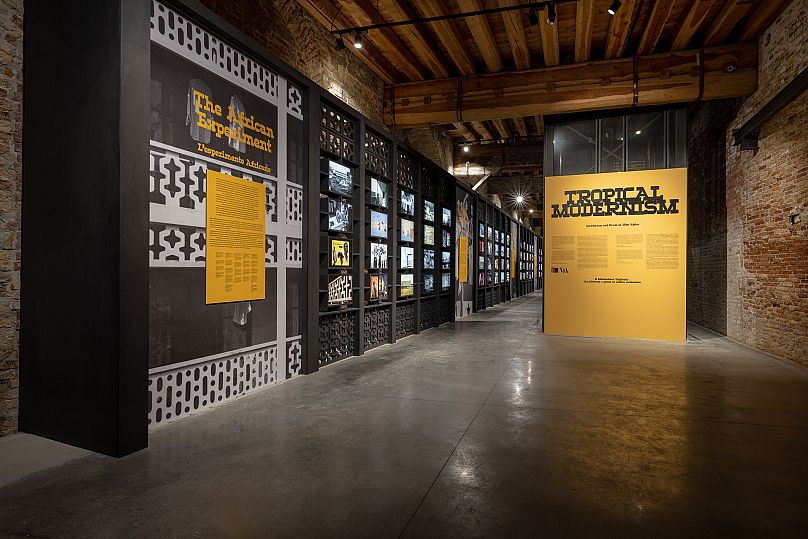The Biennale, historically dominated by a Euro-centric vision with minor participation from Asia and the Americas, is being led by Africa this year. Curator Lesley Lokko’s show makes bold, forward-thinking statements about who and what will drive the future of architecture.
In the past few years, European dominance over culture and display has been disrupted. Nations until now largely left out of the story of art and architecture have been calling for a rewrite, beginning with the restitution of numerous stolen heritage objects.
The Venice Biennale is joining this growing drive to redress the balance - one exhibit is actually the design for a structure in Nigeria to house the returned Benin Bronzes.
For the first time, the international exhibition has a curator of African origin. Scottish-Ghanaian Lesley Lokko has ensured the continent takes the spotlight; more than half the participants are from Africa or the African diaspora.
The Biennale, historically dominated by a euro-centric vision with minor participation from Asia and the Americas, is being led by Africa this year.
For the future of architecture, look to Africa
Lokko’s show makes bold, forward-thinking statements about who will lead the discipline of architecture into the future.
Alongside Africa, decarbonisation is another key theme of her exhibition and she shows that the two are inextricably connected.
As the world warms, the architecture sector needs to look to the countries already building for the heat.
One gallery in the Central Pavilion of the Giardini has been transformed by Nigerian-born Olalekan Jeyifous into a fantastical futuristic imagining of the continent freed from the hangover of colonialism and its economic exploitation of Africa.
The installation has transformed a room into a bright, leafy space employing green technologies and Indigenous knowledge systems. It represents the “All-African Protoport,” a transport hub for low-impact, zero-emissions land, sea and air travel.
African designers written back into the narrative of tropical modernism
The 2023 Biennale also looks to historic architecture movements and gives space to African creatives to correct their narratives. As Lokko says, “the ‘story’ of architecture is incomplete. Not wrong, but incomplete.”
In the Applied Arts Pavilion of the Arsenale, a long corridor (deliberately mimicking the architectural style discussed in the installation) presents a visual and descriptive history of tropical modernism.
The movement merged the international modernist style with knowledge of the hot, humid conditions in western Africa.
Tropical modernism has long been defined as a colonial style, funded by the British Colonial Office. But, as the V&A who curated the exhibition write, “the style survived the transition to Independence, when it became a key aspect of nation-building and symbol of the progressiveness and internationalism of these new countries.”
Their installation, which also includes a 30 minute video, aims to “complicate the history of tropical modernism by engaging with and centring African perspectives.”
Niger has its first pavilion at the Biennale
Niger makes its debut at the 18th edition of the international exhibition. Archifusion, housed on the island of San Servolo, is an emeshing of African and Western cultures giving rise to a cultural “laboratory.”
The installation is built around a kind of brick - the brique magique - made with locally-sourced materials in Niger.
The shape and structure of the humble construction material has been modified to improve its thermal inertia and stability for buildings of the future.












